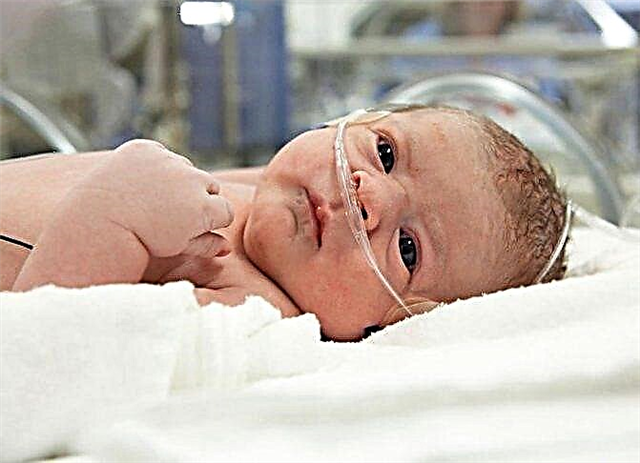
Women who have been planning pregnancy for a long time know how difficult it can be to guess the "right" day for conception. But it can be even more difficult to wait for the start of the delay. You can do the test earlier, but the accuracy of its readings will not be high. To save money and nerves, you need to learn how to correctly count the days from the likely conception, in order to know when to start self-diagnosis.
When do the tests come back positive?
The test will show you the long-awaited second strip only after the concentration of the hCG hormone in the urine increases. It is with it that the reagent applied to the test of any modification and cost reacts. The reagent contains special antibodies to the molecules of the hormonal substance, and if the number of molecules in the urine is sufficient for a full-fledged chemical reaction, a second strip will appear in the test zone.


The hormone is produced by the thin villi of the outer part of the ovum - the chorion. Chorionic hormone begins to be produced only after the embryo is implanted in the uterine cavity, and this event usually occurs a week after conception. There is also an earlier implantation, but not earlier than 5 days after conception, there is also a later attachment of the embryo, but not later than 9 days after conception.
The hormone level doubles every 2 days. And first of all, its concentration increases in the blood plasma, and only then, when the kidneys are excreted by the kidneys, the molecules of the substance necessary for diagnosis begin to penetrate into the composition of urine.

Usually, the earliest time at which the most sensitive tests can detect the presence of the hormone and show a second, even if weak, strip is considered 9-11 days after conception. That is, theoretically, if both ovulation and implantation happened on time, 4 days before the expected menstruation, sensitive tests can give a positive result. But from the first day of the delay, almost all pregnant women have high enough levels of the hormone so that home test diagnostic systems can successfully cope with the task of determining it.

Starting point - where to start?
It is not enough to understand when the test will show pregnancy. You need to know exactly where to start counting the days before testing. Many people think that one should count from the moment of conception. The difficulty is that a woman cannot determine the moment of fertilization. Sexual intercourse could have taken place even before ovulation, sperm cells live up to 3-5 days, and it is one of them that can fertilize the egg after it leaves the follicle on the day of ovulation.
But this may not happen, and then other sperm from the "fresh" batch will have a chance if intercourse is performed before the female reproductive cell dies. She lives on average about one and a half days. And it is this time that is always the time of conception, whenever sexual intercourse occurs - before or during the ovulation period.

Therefore, it is better to count the days from ovulation. If you do ovulation tests, you will know your day to within 1-2 days. If not, you can count, although the math calculation method is less accurate. To calculate your day of ovulation, you need to subtract 14. This will be the estimated day of egg release.
The first 3 days after conception, the embryo moves through the oviduct into the uterine cavity. On the 4th day after conception, it is already in place, but several more days may pass before implantation. All the time until the implantation was completed with the successful attachment of the embryo, there are no changes in the hormonal background that may indicate pregnancy. Only from the moment of the reunification of the chorionic villi with the maternal blood vessels does the body of women receive a signal to start working in a new mode, in which all organs and systems will begin to adapt to bearing offspring.


This means that from the first day after conception or after ovulation, there is no point in doing any tests. Only 7 days after conception begins to change something, but this amount of the hormone is still not enough to stain the second strip on the test. The earliest implantation is likely from the 5th day, and the latest - on the 9th day.
According to statistics, only about a third of women with increased individual sensitivity of the nervous system can feel the implantation. The rest remain in the dark. Indirect signs include the appearance of weakness, a metallic taste in the mouth, unusual pink or brownish discharge 6-7 days after conception. If you notice such symptoms, after 3 days you can try to do the first test.


But note that a small amount of the hormone requires a high reagent threshold. Therefore, only ultrasensitive diagnostic systems are suitable for the earliest diagnosis. Their packages, regardless of the name and price, are labeled 5-15 mIU / ml. Tests with standard sensitivity before the start of the delay are unlikely to show the second bar.
Possible situations
Sometimes women are delighted to note that the tests show a weak second strip as early as 5 days before the start of the delay. This suggests that implantation was earlier or ovulation occurred earlier than expected. This is quite possible, especially if a woman is young, active, travels, changes time and climatic zones. With severe stress, slight shifts in ovulation are also likely. In this case, the amount of the hormone will be higher before the delay occurs.

But it may turn out that the delay has already begun, and the tests are still negative... It could be a sign of late implantation or delayed ovulation. Ovulation can be displaced even by several days due to hormonal disruptions, stress, taking oral contraceptives in previous menstrual cycles. Lack of sleep, work at night - all this also leads to instability of the cycle.
Implantation is later with an insufficient level of progesterone in the woman's body, with a thin endometrium, which happens after several earlier abortions, several births before the current pregnancy, diagnostic curettage of the uterine cavity.


Therefore, you should not rush to conclusions if on the 10th day after conception the test does not show you the second strip. If pregnancy has occurred, then after a few days the concentration of chorionic gonadotropin will increase, it is enough to repeat the test after 2-3 days. If a second weak streak appears, this may be a sign of a small amount of hCG. Soon he will grow up, the strip will become brighter.
If the days go by, and the weakly positive result persists, you should consult a doctor - an ectopic pregnancy is possible, with her, the level of hCG is always below normal, and the growth is slow.

For how many days after intercourse you can take a pregnancy test, see the next video.



